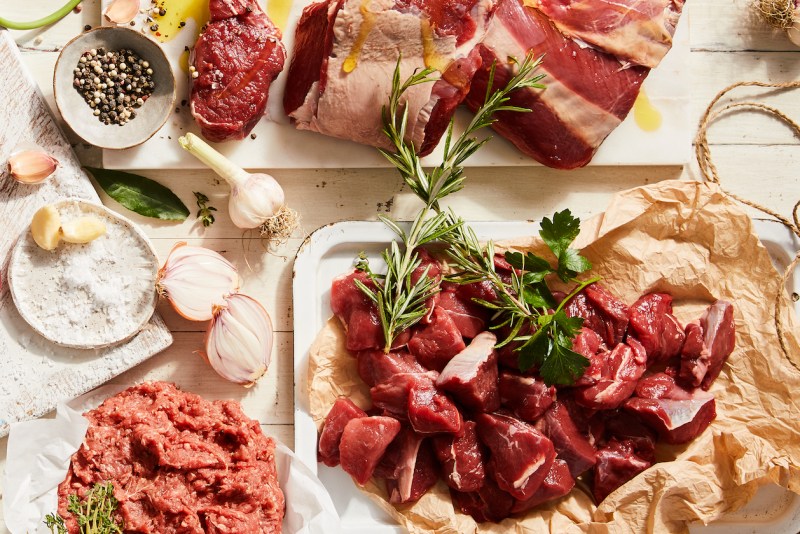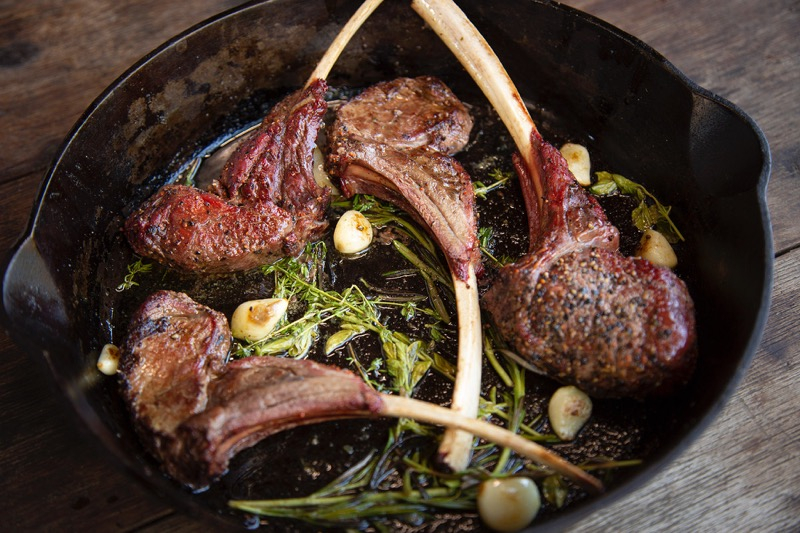A delicious and nutritious meat, venison is an awesome protein for anyone looking to upgrade their red meat diet. However, most commercially available venison is farmed and wild venison is generally the domain of hunters in rural areas. But this dynamic is changing. An innovative company trying to promote wild venison is Maui Nui, a Hawaii-based company that harvests and ships wild axis deer venison nationwide.
Related Guides
Maui Nui – Wild Hawaiian Axis Deer

Founded by Jake Muise and Hawaiian native, Kuʻulani Muise, Maui Nui is all about environmentally friendly venison with a focus on nutrition and variety. Maui Nui’s specialty is axis deer, an invasive species in Hawaii. Originally from India, axis deer was first brought to Hawaii in 1867. Because axis deer have no natural predators in Hawaii, the population grew exponentially, causing damage to native plants and animal species.
A great way to combat this issue is to turn axis deer into a viable source of protein. To harvest these wild animals, Maui Nui uses an innovative harvesting method — FLIR (Forward Looking Infrared). This technology enables Maui Nui to detect the deer and eliminate stress on the animals by allowing all inspection and harvesting to be done entirely at night. They’re the only company in the world that manages and harvests wild deer with this technology.
“Not only is this more humane, it’s how we’re able to offer meat that is truly wild until the moment of harvest,” said Kuʻulani Muise. “Doing all of this at night, without penning, baiting, or interacting with the deer in any way prior to harvest, is what makes our process so unique.”
Maui Nui sells its venison both fresh and prepared (smoked meat sticks and bars). Fresh cuts range from rib racks to ground venison perfect for chili or meatballs. Like farmed meat, wild meat also requires USDA approval. A USDA inspector must be on site for the entire harvesting process and post mortem inspection process. A USDA veterinarian must also check the deer for issues to ensure the meat is safe for human consumption.
How to Cook Venison

One of the most common fears about eating wild game like venison is gaminess. When properly prepared, axis deer is tender, with a mild, clean flavor devoid of any barnyard gaminess. Because wild venison like axis deer has very little fat and marbling compared to farm-raised beef, it’s critical not to overcook the meat. For smaller cuts, sear no more than 3-4 minutes on each side. For larger pieces, sear on high for 2 minutes on each side. Then, cook in an oven at a low temperature (300 degrees Fahrenheit) until the internal temperature is 130 F (15-20 minutes depending on the size of the cut).
Besides flavor, axis deer is also extremely nutritious. Hawaiian axis deer is high in lean protein (21 grams of protein per 100 grams of meat, similar to beef). Also, since Maui Nui venison is wild, the animal’s diet is incredibly healthy, consisting of wild grasses and plants. All of this results in a meat that’s rich in omega 3 fatty acids, iron and vitamins B12 and B6.
Finally, wild axis deer also satisfies another factor — environmental considerations. The livestock industry is fraught with mislabeling and controversy. For many people, wild animal protein solves this issue by providing unparalleled nutrition and sustainability.
“There’s a growing push for better meat — meat that is better for the environment, for the animals themselves, and for our own nutrition.” said Kuʻulani Muise. “Even for the most conscientious meat-eater, finding the most nutritious meat options in the marketplace can be pretty mystifying.”
Venison Rib Chops

(By Chef Matt Pittman, Pitmaster and Founder of MeatChurch BBQ)
This recipe calls for a reverse-sear method. An entire rib rack will be smoked to 120 degrees internal temperature. Then, slice the rack into individual chops (or double chops) and sear them quickly on a hot cast iron surface to char.
Ingredients:
- Maui Nui Venison Rib rack, whole
- Holy Cow BBQ Rub by Meat Church BBQ (or your favorite meat rub)
- Coarse cracked black pepper
- ½ stick unsalted butter
- Fresh herbs for finishing: rosemary, thyme oregano
- 3 – 6 cloves of garlic
- Olive oil
Method:
- Prepare your pellet grill or smoker to a temperature of 250 degrees (we love hickory, mesquite, or oak). If you don’t have a pellet grill or smoker, you can create a two-zone fire setup where you move the charcoal to one side of the grill.
- Remove any excess fat or silver skin from the rib rack. Apply a light coating of olive oil to the meat to act as a binder for the seasoning.
- Season the rib rack moderately with Holy Cow BBQ Rub. Optional: Rub some coarse cracked black pepper into the meat. Let these seasonings adhere for at least 15 minutes.
- Place the rib rack directly onto the cooking grate. If you are using a two-zone grill setup, you will place the rib rack over the cooler side of the grill. Cook until it reaches an internal temperature of 120. At 250 degrees this should take 35 – 45 minutes, depending on the size of the rack. For a medium rare finish, cook to 130 – 135 degree internal temperature.
- Pull the rib rack after it has reached an your desired internal temperature. Let it rest 10 minutes, lightly tented with aluminum foil.
- Prepare a cast-iron skillet over medium to high heat. The rib chops can also be cooked directly over the grill grates without the skillet.
- Slowly melt butter in the skillet while adding the garlic and herbs. Don’t get the pan too hot or the butter will burn.
- Slice the rib rack into chops and sear them individually on each side in the pan. Each side will take 30 – 60 seconds, depending on your desired finish. Use a spoon to baste and coat the chops in the butter.
- Remove the chops and allow to cool. Slice and enjoy!



